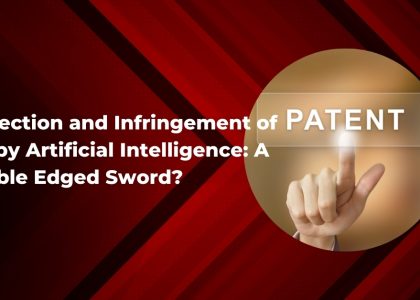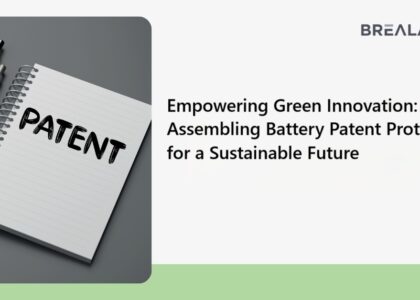Standard Essential Patenting and Frand Terms
Standards, based on proprietary technologies that allow machines and gadgets to communicate effectively and efficiently with one another, aid and enable the modern interactive world. We can benefit from connectivity thanks to these technological standards, and patents guarantee the inventor’s rights to such technology, particularly telecommunications technologies like data transmission, carrier aggregation, and battery mode solutions.
Standard essential patents, or SEPs, are the patents that defend the technology that is crucial to their standards. This article will explain SEPs, how they are created, and topics linked to them in the telecommunications industry.
What is a Standard Essential Patent?
The term “standard essential patent” refers to a patent that covers a technology that is “essential” to a standard. The word “standard” refers to a norm formed from technical requirements for particular technologies, like radio technology.
Everyday consumer goods like smartphones and tablets must adhere to several criteria and need proprietary technology. It is easier to produce these standard-compliant goods using critical technology protected by one or more SEPs.
Patents not necessary to a standard are identical to standard essential patents. Companies can generally offer alternate inventions to circumvent an existing non-SEP to avoid patent infringement, but they cannot design around a SEP.
THE WORLD OF STANDARDS
What are these standards?
Standardized technologies include those that we instinctively utilize daily. These include technology used in creating video, audio, and autonomous vehicles and those used in our mobile devices like Wifi, Bluetooth, and LTE. Near-Field Communication (NFC) is also used in smart cards. Did you realize that our photographs’ JPEG format also abides by a set of standards?
It should be noted that the standards for each technology may go through periodic updates and adjustments in accordance with their relevant technological requirements.
Who sets them?
Standard-Setting Organizations (SSOs) like the European Telecommunications Standards Institute (ETSI) in Europe, the Alliance for Telecommunications Industry Solutions (ATIS) in the US, and numerous more throughout the world are generally in charge of setting standards.
The 3GPP (3rd Generation Partnership Project), which is in charge of creating the technologies that underpin these international standards, developed and provided the technical specifications (TS) used to formulate the criteria for telecommunication technologies.
The term “3GPP” refers to a group of seven regional SSOs who work together to create and uphold IPR policies. The figure below shows how the SSOs and 3GPP contribute to creating telecommunications standards and regulations.
Simply put, SSOs like ETSI develop standards, and 3GPP provides the technical specifications.
ETSI is the organization that sets the great majority of SEPs issued for digital communication technologies like GSMTM, WCDMA (3G), LTE (4G), NR (5G), and DECTTM. ETSI’s primary focus is the creation of technical standards that support the crucial global technologies mentioned above. Globally, the ETSI IPR database in the telecommunications industry is comparatively more active, accessible, and transparent.
The ETSI IPR database has approximately 341,909 patent applications declared to the GSM, UMTS (3G), LTE (4G), and 5G standards. This comprises 152,929 active SEPs, almost all deployed in smartphones and tablets marketed in Europe.
How do SEPs work?
SEPs must first be declared, for instance, at the ETSI IPR database. An owner of a patent must submit a declaration to achieve this. The standard/specification number and the patent application or publication number are the minimally required information. Applicants must fill out the remaining declaration sections with all necessary details, such as project names, releases, versions, etc. A declaration may include many SEPs and their relatives.
The fundamental tenet is that standard-compliant product producers, also known as SEP implementers, must obtain a license from SEP holders to exploit the technology covered by at least one SEP (or owners). The parties will then discuss the terms and costs of employing the technology. A license agreement that must include the FRAND terms, which we will go over in more detail in the following section, formalizes the results of these negotiations.
SEPs are necessary for organizations since they are essential to a standard. The dispute is typically filed before various courts worldwide when SEP holders and implementers need help to reach a licensing agreement. In the telecommunications industry, there has been a noticeable increase in court cases over the past ten years involving numerous household names like Apple, Google, Motorola, Samsung, Ericsson, and Microsoft.
What is FRAND?
SSOs bring together industry representatives to create technological standards. Then, in return for an agreed-upon payment, SEP holders agree to make their patented technology available under Fair, Reasonable, and Non-Discriminatory (FRAND) terms (also known as RAND). In other words, FRAND terms guarantee that SEP implementors can obtain licenses and use standardized technology reasonably.
- Fair: Fair licensing requirements are typically relatively simple to identify; for example, it would be unfair to demand concessions from a licensee that are not included in the licensing agreement or to tie the granting of the license to unrelated commitments. On the other hand, fairness is more elusive and challenging to define.
- Reasonable: Although this is a subjective notion, a fair yardstick for determining reasonableness would be to compare it to standard industry practice, mainly when talking about licensing royalty rates.
- Non-discriminatory: Licensees in similar circumstances should always be subject to the same terms and fees. If this doesn’t occur for some reason, there should always be some legitimate justification for the differential treatment.
The ETSI IPR Policy requires SEP holders to submit “an irrevocable undertaking in writing” within three months of submitting a declaration, in which they promise to grant “irrevocable licenses on fair, reasonable, and non-discriminatory (“FRAND”) terms and conditions.”
Although we frequently refer to them as FRAND “obligations,” we would want to clarify that FRAND terms are not regulations. Simply put, when SSO members declare SEPs at such SSOs, they do so with the understanding that they will abide by FRAND rules. This implies that no particular organization has been assigned to enforce such FRAND terms.
Antitrust proceedings occasionally involve SEP issues where a patent owner declines to give a license or refuses to do so under FRAND terms. The judge or jury will decide the FRAND conditions and royalty rates for the parties involved in other disputes between the licensor and licensee in courts worldwide.
Challenges faced in the SEP world
Despite this approach to utilizing and protecting the technology covered by SEPs appearing to be simple, dealing with SEPs presents many difficulties for both implementors and IP professionals. The over-declaration of SEPs, the absence of standardized data, and, to name a few, the difficulty in calculating royalty rates while negotiating SEP licensing are some of the significant challenges.
Over-declaration of standard essential patents
Standard essential patents are often self-declared as necessary for implementing standards by enterprises that possess the relevant patents. It’s vital to remember that there has yet to be an evaluation of the claimed SEPs to determine their supposed essence.
Since there is no screening for essentiality, it is typically up to the businesses negotiating a licensing deal to determine the value of a patent and its essentiality. Both legal and financial considerations might cause the problem of excessive SEP declarations.
Opposing legal teams may frequently find themselves in SEP litigations making technical arguments about whether the relevant technology is necessary to a standard.
Lack of standardized data
It is challenging to consolidate and compile declaration data because, as was previously indicated, standards are established by numerous regional SSOs, and declarations are not made to a single international body.
For those that work with SEP data, the declaration data’s completeness is also a problem. As an illustration, ETSI SEP statements are self-evaluations done by the declaring companies without third-party verification. As previously stated, only the technical specification or standard and patent/application number are required when submitting a declaration to ETSI. Other crucial details like the version number, release details, or project names should be included in SEP declarations. The patent assignee may occasionally be listed under the parent company, but upon closer inspection, we discover that the valid owner is a subsidiary.
This makes working with SEP data laborious and time-consuming.
Difficulty in determining royalty rates
Conflicts over the royalty rates in SEP license agreements frequently emerge and drag out discussions because FRAND is a subjective concept. The actual royalty rate the licensee is ready to pay and the licensor is willing to accept must be decided before determining the essentiality of a SEP or SEPs. As is typical in licensing agreements for LTE technology, the negotiation phase might last anywhere from a few months to many years. For example, it took many years and battles to get an agreement on the license deal between Ericsson and Samsung in 2014.








